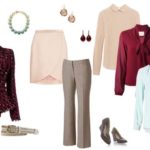When people ask me this question, I inevitably use my standard answer, which is: “It depends.” There are a lot of factors in play that make this process more complex than a quick sort and purge, as well as create a deeply satisfying result that goes beyond simple organization. Every individual is different and deserves a customized approach; our process is similar in each case, but gives different results based on a client’s objectives. Here are some of the things we take into account when planning an analysis for a client:
The first piece of wardrobe analysis is a simple numbers game. In order to accurately estimate how long it will take, I’ll need to know how many closets are included in the wardrobe (seasonal items too), how big they are and if there are any other places where clothing is being stored such as in drawers, boxes or other rooms in the home.
The second part is figuring out how much of what’s there is actually useful. If there is a lot of purging to be done, the first place we start is by looking at whether or not an item fits, is in good repair, is current and has been worn in the past year. If it passes all those tests, then we can send it on for further analysis. If not, then it goes. We look at everything, including accessories, bags, footwear, jewelry, hats and outerwear. We look at things that complete a wardrobe but are rarely thought of, such as umbrellas or activity specific clothing or even underwear! Every item is examined in order to get a complete picture of what we’ve got to work with.
Once we’ve done an initial purge, we start to look a little deeper. We look at whether or not an item is a good colour, cut and style to fit the client’s colouring, body type, personality and lifestyle. We also look at items from an emotional point of view – if the items are sentimental then we want to be respectful of a client’s need for connection to that item and talk about whether it will stay or go. We also look strategically at the items to figure out what will work best to achieve specific objectives such as feeling a certain way, getting promoted or getting a date. After figuring out what’s not working, bagging it up and letting it go, we start to dig into the items that remain.
We analyze the client’s lifestyle and determine the number of pieces of clothing they need for the activities they do. This might include clothing for work, social activities, physical activities or special categories like travel, bedroom clothing or play clothing. We even figure costume items into the mix from time to time, as some of our clients love to have dress-up or play options in their wardrobe. Every reason for clothing needs clothing to match. Based on that, we can then create wardrobe modules or groups of clothing for different functions so our clients get maximum functionality out of their closets.
When the modules are complete, we start filling in the blanks using items that we kept from the first part of our analysis. Anything that’s left blank forms the basis of our shopping list and budget plan for completing their wardrobe. We then follow up with next steps for creating wardrobe catalogues for our clients, shopping and mix and match sessions to buy and integrate new items into the wardrobe.
How long this process takes depends entirely on our clients; it ranges from a few hours to a few days. Ultimately, we work with results, not time, so clients who seek our services are wanting wardrobes that suit them on every level, right down to their soul and we work with them to find a time frame that works.
Want some help in figuring this out? We’re here for you. Click to get started.
